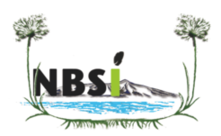Water hyacinth
Water hyacinth (scientific name: Eichhornia crassipes) is an ornamental higher plant introduced to the lake during the 1970s, probably washed off somebody's garden pond. It tends to form dense mats that impede navigation and fishing.
A complete eradication of Water hyacinth is not practicable and may not be entirely desirable. In the lake, Water hyacinth absorbs nutrients and contributes to water purification. Its elaborate floating root system offers a substrate for the growth of numerous worms, insects, spiders, snails and crayfish that provide food for fish. Fish themselves hide under Water hyacinth prairies to find refuge from bird predators.
Water hyacinth has many positive potential uses. It is grown in Asia as fodder crop for rearing cattle, goats and pigs. Water hyacinth juice is said to have nutritious and medicinal properties for humans. In Western Province, several products have been created using Water hyacinth fibre. In recent years, Waterbuck and other wild animals have been seen consuming Water hyacinth leaves, indicating that they are progressively becoming adapted to this exploiting new resource.
While mechanical removal may be far too expensive, clearing Water hyacinth from strategic places such as fish landing sites could produce several advantages for local communities, such as: leaves to be used as fodder, stems to be dried in the sun and used to produced briquettes replacing charcoal, roots that can be added to compost and can be used as fertiliser on farms.



